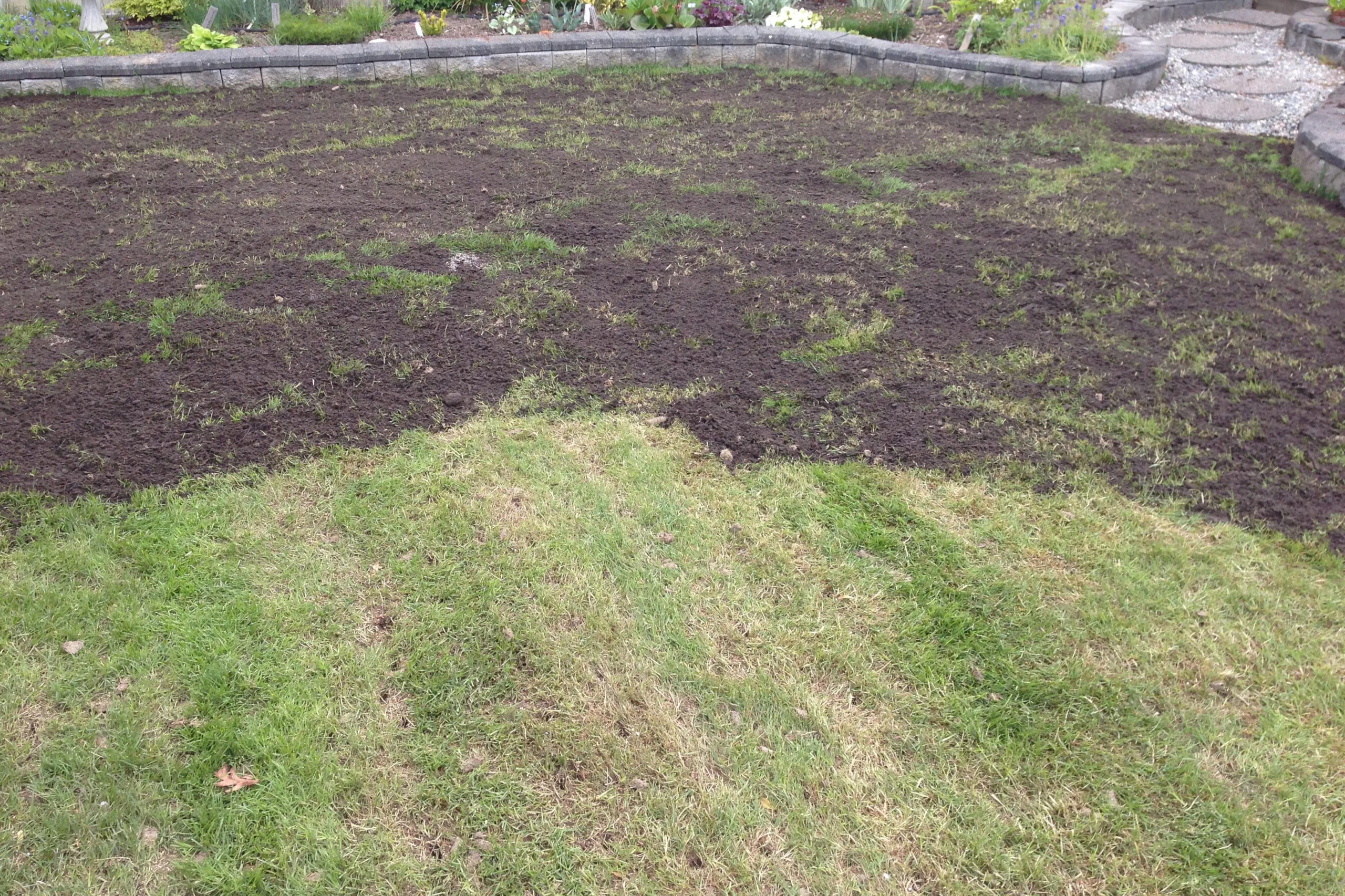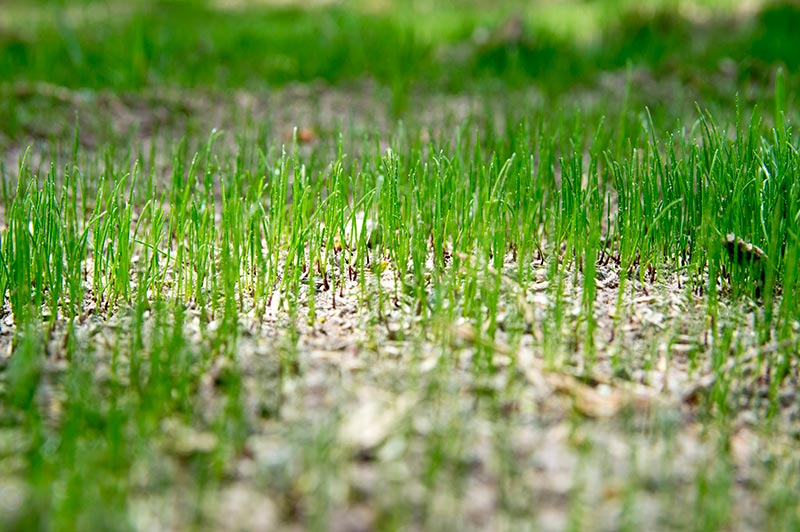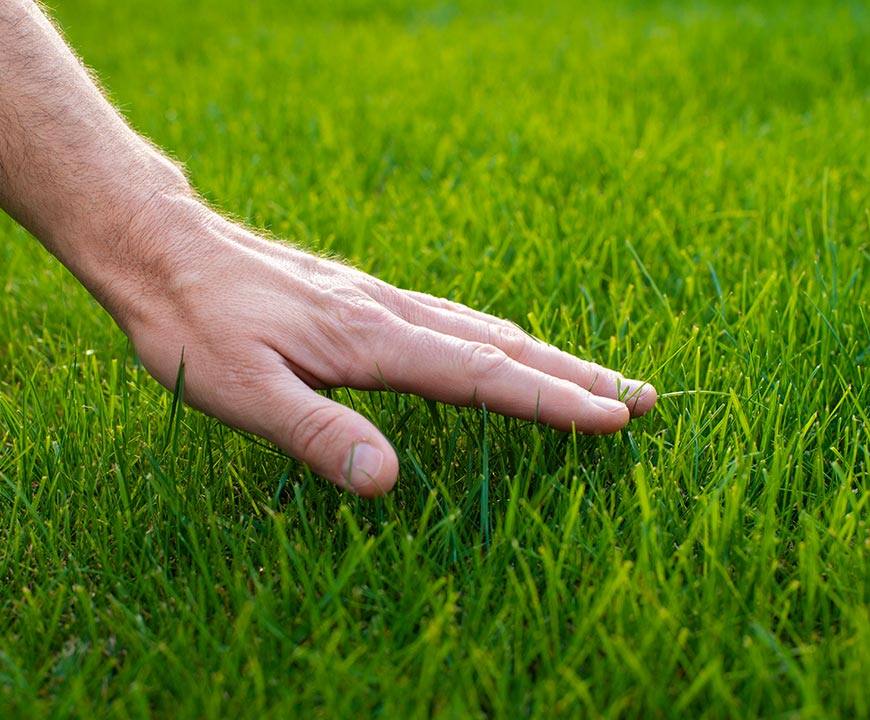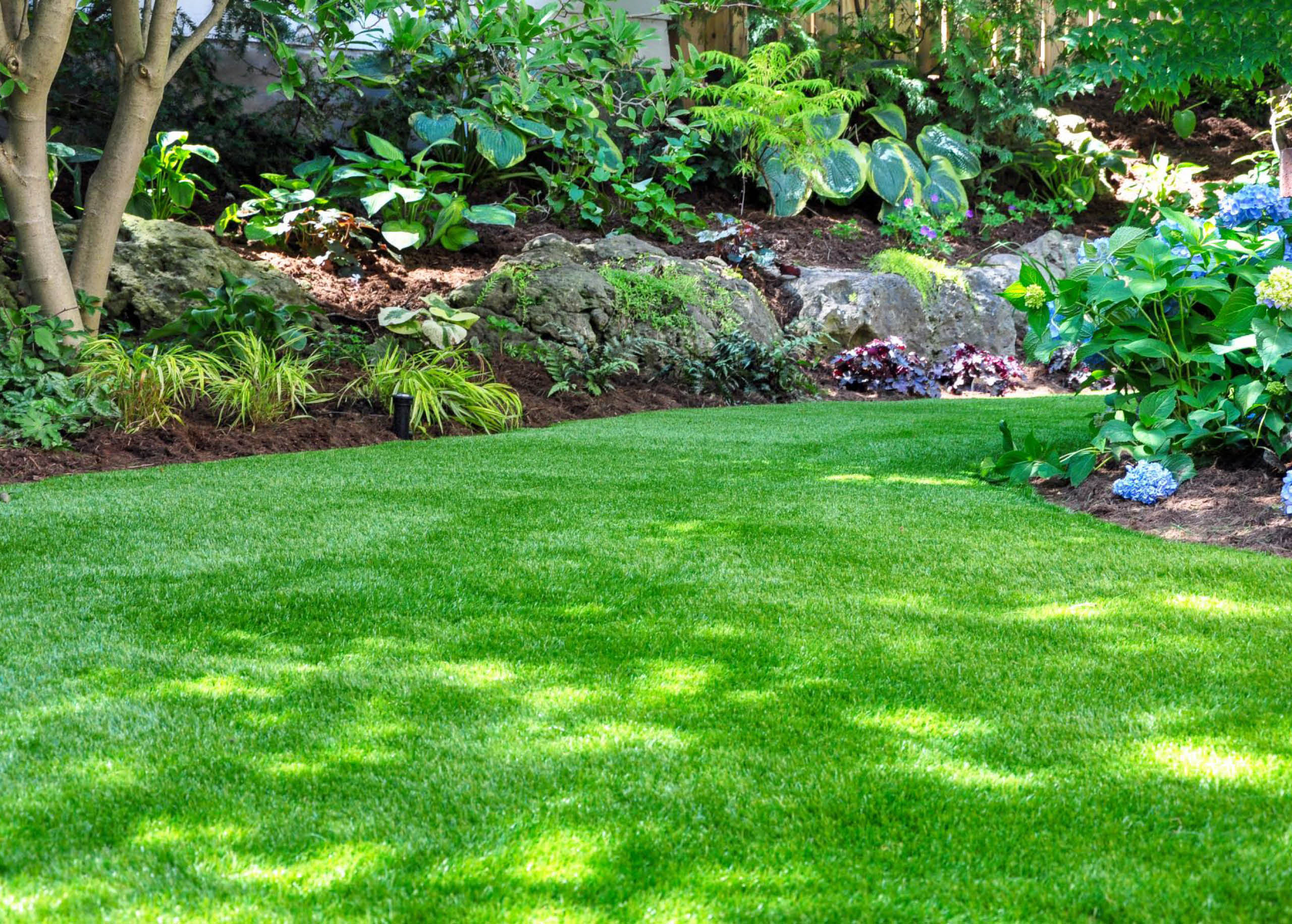Assessing Your Soil: The Key to a Thriving Lawn
Soil testing and analysis are crucial steps in determining the pH level, nutrient content, and structure of your soil. By understanding the composition of your soil, you can make informed decisions about how to improve your grass and create a thriving lawn. A soil test can reveal deficiencies in essential nutrients like nitrogen, phosphorus, and potassium, which can impact grass growth and health.
To collect a soil sample, start by selecting a spot on your lawn that is representative of the entire area. Use a soil probe or trowel to collect a sample from the top 6-8 inches of soil. Mix the sample well and send it to a laboratory for analysis. The results will provide a detailed breakdown of your soil’s pH level, nutrient content, and structure.
Interpreting the results of a soil test can be complex, but there are a few key things to look for. First, check the pH level of your soil, which should be between 6.0 and 7.0 for most grass types. If your soil is too acidic or alkaline, it can impact nutrient availability and grass growth. Next, look at the nutrient content of your soil, including nitrogen, phosphorus, and potassium. These nutrients are essential for healthy grass growth, and deficiencies can impact the overall health of your lawn.
By assessing your soil and understanding its composition, you can take the first step towards creating a thriving lawn. Whether you’re looking to improve the health of your grass or simply want to create a beautiful outdoor space, soil testing and analysis are essential tools in your lawn care arsenal.
How to Choose the Right Fertilizer for Your Lawn
With so many different types of fertilizers available, choosing the right one for your lawn can be overwhelming. However, by understanding the unique needs of your grass and soil, you can select a fertilizer that will promote healthy growth and improve the overall appearance of your lawn. When it comes to fertilizers, there are two main options: organic and synthetic.
Organic fertilizers are made from natural ingredients such as animal waste, compost, and green sand. These fertilizers release nutrients slowly, providing a steady supply of nutrients to your grass over time. Synthetic fertilizers, on the other hand, are made from chemical compounds and provide a quick burst of nutrients to your grass. While synthetic fertilizers may provide faster results, they can also burn your grass if overapplied.
To choose the right fertilizer for your lawn, start by considering the type of grass you have. Different types of grass have unique nutrient requirements, so it’s essential to choose a fertilizer that is formulated specifically for your grass type. For example, if you have a cool-season grass like Kentucky bluegrass or perennial ryegrass, you’ll want to choose a fertilizer that is high in phosphorus to promote root growth.
Next, consider the pH level of your soil. If your soil is too acidic or alkaline, it can impact nutrient availability and grass growth. Choose a fertilizer that is formulated to work well in your soil’s pH range. Finally, consider the time of year and the specific needs of your lawn. For example, if you’re looking to promote new growth in the spring, you may want to choose a fertilizer that is high in nitrogen.
By choosing the right fertilizer for your lawn, you can promote healthy growth and improve the overall appearance of your yard. Remember to always follow the instructions on the label and apply the fertilizer at the recommended rate to avoid burning your grass.
Mowing and Watering Strategies for a Healthy Lawn
Mowing and watering are two of the most critical aspects of lawn care. Proper mowing and watering techniques can help promote healthy growth, prevent disease, and improve the overall appearance of your lawn. When it comes to mowing, the height and frequency of your mows can have a significant impact on the health of your grass.
For most grass types, it’s recommended to maintain a mowing height of 2.5-3 inches. This allows the grass to grow tall enough to shade out weeds and prevent soil compaction, but short enough to prevent the grass from becoming too leggy. It’s also essential to mow your lawn at the right frequency. For cool-season grasses, it’s recommended to mow once a week during the growing season, while warm-season grasses may require more frequent mowing.
Watering is also critical for a healthy lawn. Overwatering can lead to shallow root growth, disease, and pest problems, while underwatering can cause stress and make the grass more susceptible to disease. The key is to find the right balance. For most lawns, it’s recommended to provide about 1-2 inches of water per week, either through rainfall or irrigation.
When it comes to watering, it’s also essential to consider the time of day and the type of soil you have. For example, if you have a clay-based soil, it’s best to water in the morning or early afternoon to allow the soil to absorb the water slowly. If you have a sandy soil, it’s best to water in the evening or at night to reduce evaporation.
By following these mowing and watering strategies, you can help promote healthy growth and improve the overall appearance of your lawn. Remember to always monitor your lawn’s response to your mowing and watering techniques and adjust as needed to ensure the best results.
Controlling Weeds and Pests: Natural and Chemical Methods
Weeds and pests can be a major nuisance for lawn owners, causing damage to the grass and creating an unsightly appearance. There are many different types of weeds and pests that can harm your lawn, including dandelions, crabgrass, and white grubs. Fortunately, there are many effective methods for controlling these pests, including natural and chemical methods.
One of the most effective natural methods for controlling weeds and pests is to maintain a healthy lawn through proper mowing, watering, and fertilizing. A healthy lawn is better able to resist the growth of weeds and pests, and is less likely to be damaged by them. Additionally, there are many natural products available that can help to control weeds and pests, such as herbicides and insecticides made from natural ingredients.
Chemical methods can also be effective for controlling weeds and pests, but they should be used with caution. Chemical herbicides and insecticides can be toxic to people, pets, and the environment, so it’s essential to follow the instructions carefully and take necessary precautions. Some common chemical methods for controlling weeds and pests include the use of herbicides and insecticides, as well as the application of pesticides.
Some popular natural methods for controlling weeds and pests include the use of boiling water, vinegar, and soap. These methods can be effective for controlling small infestations of weeds and pests, and are a good alternative to chemical methods. Additionally, there are many natural products available that can help to control weeds and pests, such as diatomaceous earth and neem oil.
It’s also important to note that prevention is the best method for controlling weeds and pests. By maintaining a healthy lawn and taking steps to prevent the growth of weeds and pests, you can reduce the need for chemical or natural methods. Some ways to prevent the growth of weeds and pests include the use of mulch, the removal of debris, and the application of a pre-emergent herbicide.
Aeration and Dethatching: Essential Maintenance Tasks
Aeration and dethatching are two essential maintenance tasks that can help to improve the health and appearance of your lawn. Aeration involves removing small plugs of soil and grass to improve airflow, reduce soil compaction, and promote healthy drainage. Dethatching, on the other hand, involves removing dead grass and debris from the lawn to improve its overall appearance and promote healthy growth.
Aeration is an important task because it helps to improve the overall health of the lawn. By removing small plugs of soil and grass, aeration allows for better airflow, which can help to reduce soil compaction and promote healthy drainage. This can be especially beneficial for lawns that are prone to puddling or have poor drainage.
Dethatching is also an important task because it helps to remove dead grass and debris from the lawn. This can help to improve the overall appearance of the lawn and promote healthy growth. Dethatching can be done using a dethatching rake or a power rake, and it’s typically recommended to do it once a year, in the spring or fall.
There are several different methods for aerating and dethatching a lawn, including manual and powered aerators, and dethatching rakes and power rakes. The method you choose will depend on the size of your lawn, the type of grass you have, and your personal preference. It’s also important to note that aeration and dethatching can be done at the same time, or separately, depending on your lawn’s specific needs.
By incorporating aeration and dethatching into your lawn care routine, you can help to improve the health and appearance of your lawn. These tasks can help to promote healthy growth, improve drainage, and reduce soil compaction, all of which can contribute to a lush and vibrant lawn.
Overseeding and Resodding: Repairing a Damaged Lawn
Overseeding and resodding are two effective methods for repairing a damaged lawn. Overseeding involves applying new grass seed to the existing lawn, while resodding involves replacing the existing lawn with new sod. Both methods can help to restore the health and appearance of a damaged lawn, but they require careful planning and execution.
Before overseeding or resodding, it’s essential to prepare the soil properly. This includes removing any debris, aerating the soil, and applying a starter fertilizer. The soil should also be tested to determine its pH level and nutrient content, and any necessary adjustments should be made.
When overseeding, it’s crucial to choose the right type of grass seed for your lawn. The seed should be suitable for your climate, soil type, and intended use. It’s also important to apply the seed at the right rate and to rake it in properly to ensure good contact with the soil.
Resodding, on the other hand, involves replacing the existing lawn with new sod. This can be a more expensive option than overseeding, but it provides a more immediate solution. When resodding, it’s essential to choose high-quality sod that is suitable for your climate and soil type. The sod should be installed properly, with the soil prepared beforehand and the sod laid in a staggered pattern to prevent erosion.
After overseeding or resodding, it’s essential to provide proper care to the new grass. This includes watering, mowing, and fertilizing the lawn regularly. It’s also important to monitor the lawn for any signs of disease or pests, and to take action promptly if necessary.
By following these steps, you can successfully repair a damaged lawn using overseeding or resodding. Remember to be patient, as it may take some time for the new grass to establish itself. With proper care and maintenance, your lawn can be restored to its former health and beauty.
Maintaining Your Lawn Year-Round: Seasonal Tips and Tricks
Maintaining a healthy and vibrant lawn requires attention to detail and a commitment to regular care. While the specific needs of your lawn may vary depending on the season, there are some general tips and tricks that can help you keep your lawn looking its best year-round.
In the spring, focus on preparing your lawn for the growing season. This includes applying a pre-emergent herbicide to prevent crabgrass and other weeds, as well as fertilizing your lawn with a balanced fertilizer. You should also aerate your lawn to improve drainage and reduce soil compaction.
During the summer months, your lawn will require more frequent watering and mowing. Be sure to water your lawn deeply but infrequently to encourage deep root growth, and mow your lawn at the recommended height for your grass type. You should also apply a summer fertilizer to promote healthy growth and prevent disease.
In the fall, focus on preparing your lawn for the dormant season. This includes applying a fall fertilizer to promote root growth and harden off your lawn, as well as aerating your lawn to improve drainage and reduce soil compaction. You should also overseed your lawn to fill in any bare spots and thicken your turf.
During the winter months, your lawn will require less maintenance, but it’s still important to protect it from damage. Be sure to apply a winterizer fertilizer to promote root growth and harden off your lawn, and avoid walking on your lawn when it’s frozen or covered in snow. You should also consider applying a snow mold fungicide to prevent disease.
By following these seasonal tips and tricks, you can help keep your lawn looking its best year-round. Remember to always follow the specific instructions for your grass type and climate, and to consult with a lawn care professional if you have any questions or concerns.
Maintaining Your Lawn Year-Round: Seasonal Tips and Tricks
Maintaining a healthy and vibrant lawn requires attention to detail and a commitment to regular care. While the specific needs of your lawn may vary depending on the season, there are some general tips and tricks that can help you keep your lawn looking its best year-round.
In the spring, focus on preparing your lawn for the growing season. This includes applying a pre-emergent herbicide to prevent crabgrass and other weeds, as well as fertilizing your lawn with a balanced fertilizer. You should also aerate your lawn to improve drainage and reduce soil compaction.
During the summer months, your lawn will require more frequent watering and mowing. Be sure to water your lawn deeply but infrequently to encourage deep root growth, and mow your lawn at the recommended height for your grass type. You should also apply a summer fertilizer to promote healthy growth and prevent disease.
In the fall, focus on preparing your lawn for the dormant season. This includes applying a fall fertilizer to promote root growth and harden off your lawn, as well as aerating your lawn to improve drainage and reduce soil compaction. You should also overseed your lawn to fill in any bare spots and thicken your turf.
During the winter months, your lawn will require less maintenance, but it’s still important to protect it from damage. Be sure to apply a winterizer fertilizer to promote root growth and harden off your lawn, and avoid walking on your lawn when it’s frozen or covered in snow. You should also consider applying a snow mold fungicide to prevent disease.
By following these seasonal tips and tricks, you can help keep your lawn looking its best year-round. Remember to always follow the specific instructions for your grass type and climate, and to consult with a lawn care professional if you have any questions or concerns.









